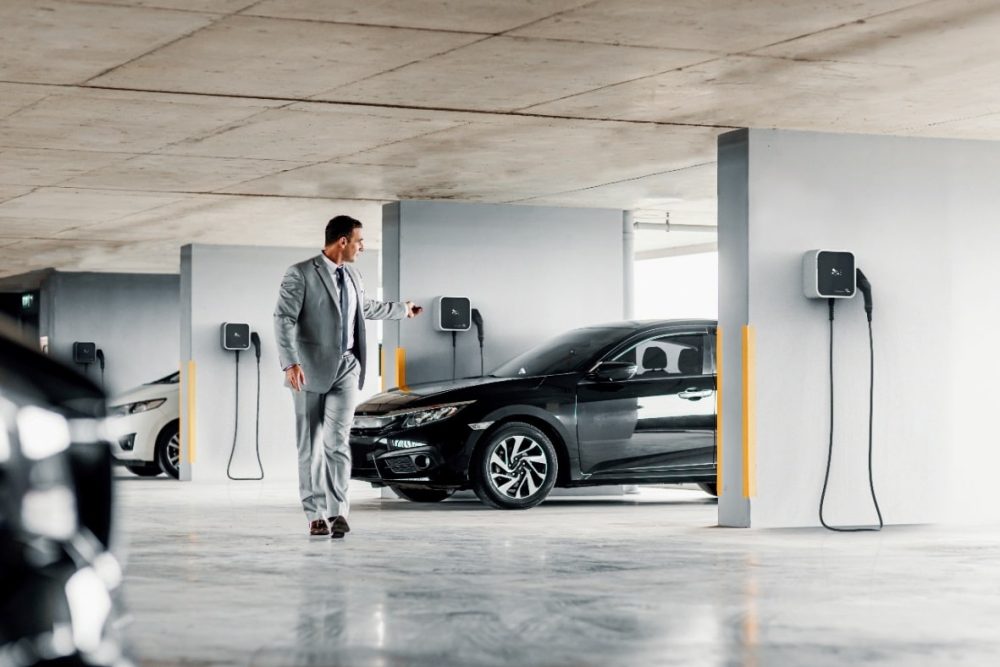THE gradual shift towards e-mobility has also reached the corporate sphere in the UK and more and more companies are opting to incorporate EVs into their fleets.
The environmental component plays a key role in this transition process, as its implementation can significantly reduce CO2 emissions, which reinforces companies’ commitment to sustainability.
Beyond environmental sustainability, companies can benefit from many advantages by electrifying their fleet, such as cheaper refuelling costs, a reduction in the tax burden when purchasing EVs, greater energy efficiency, greater freedom of movement in low-emission areas, the availability of public subsidies or an improvement in the company’s reputation by committing to a new mobility model.
Juice Technology, one of the world’s leading companies in the design and marketing of charging solutions for electric vehicles, offers a series of strategies or steps for an efficient fleet electrification:
- Good planning: Before embarking on the electric mobility journey, fleet operators should thoroughly analyse their current situation. Assess the existing fleet, the driving patterns of their employees, the charging infrastructure and energy requirements. A clear roadmap for the transition, including a timetable and budget, will need to be developed to ensure a seamless integration of electric vehicles.
- Justification of electrification costs: Fleet electrification has many benefits, but one of the most important is the reduction in total cost of ownership (TCO). Electrification can involve a significant upfront investment, but the reduction in maintenance, operating costs and fuel supply can make up the difference. In addition, incentive financing can reduce acquisition costs. Some ways to reduce fleet costs to make room for electrification include driver training, vehicle monitoring and telematics systems, and sourcing repair providers and other external partners.
- Developing charging infrastructure: A robust charging infrastructure is crucial for the successful EV adoption. Work with charging station providers, utilities and other stakeholders to establish an efficient charging network. Consider installing charging stations in strategic locations, such as your office car park, or opt for more flexible charging solutions, such as portable charging stations, through which the employee can charge the vehicle at home, in the office or anywhere else where there is a power outlet (domestic or industrial). This will ensure a reliable charging experience for drivers.
- Engage drivers: A good starting point for electrification is to teach drivers how to drive and maintain an electric vehicle. It is important to ensure that all company drivers are properly trained and educated on the operation, maintenance and safety protocols of an electric car. Familiarising employees with the technology will promote confidence and encourage active participation in the electrification process.
- Technology and integration: By leveraging smart charging solutions, fleet operators can remotely monitor vehicle status, plan charging schedules and optimise energy use. With j+pilot, the app developed by Juice Technology and compatible with all car models, each journey is automatically logged, allowing the app to show how much energy the car consumes and how much regenerative braking energy is recovered on a given journey. This helps to drive more economically and sustainably and also offers a personalised driver experience by providing data on driving behaviour or allowing remote planning of charging sessions.
- Align EV purchases with the growth of the charging infrastructure: Before expanding your EV fleet, start by investigating your infrastructure. An electric vehicle cannot operate without a charger. As you expand your fleet, consider whether your charging network, whether through fixed or portable chargers, has the capacity to support that growth.
- Data analysis: Telematics data on fleet behaviour and driving patterns is critical to operating your fleet. Systematic and continuous analysis of this data over time will help you to introduce possible corrective measures and, as a result, make your fleet management increasingly efficient and sustainable.








